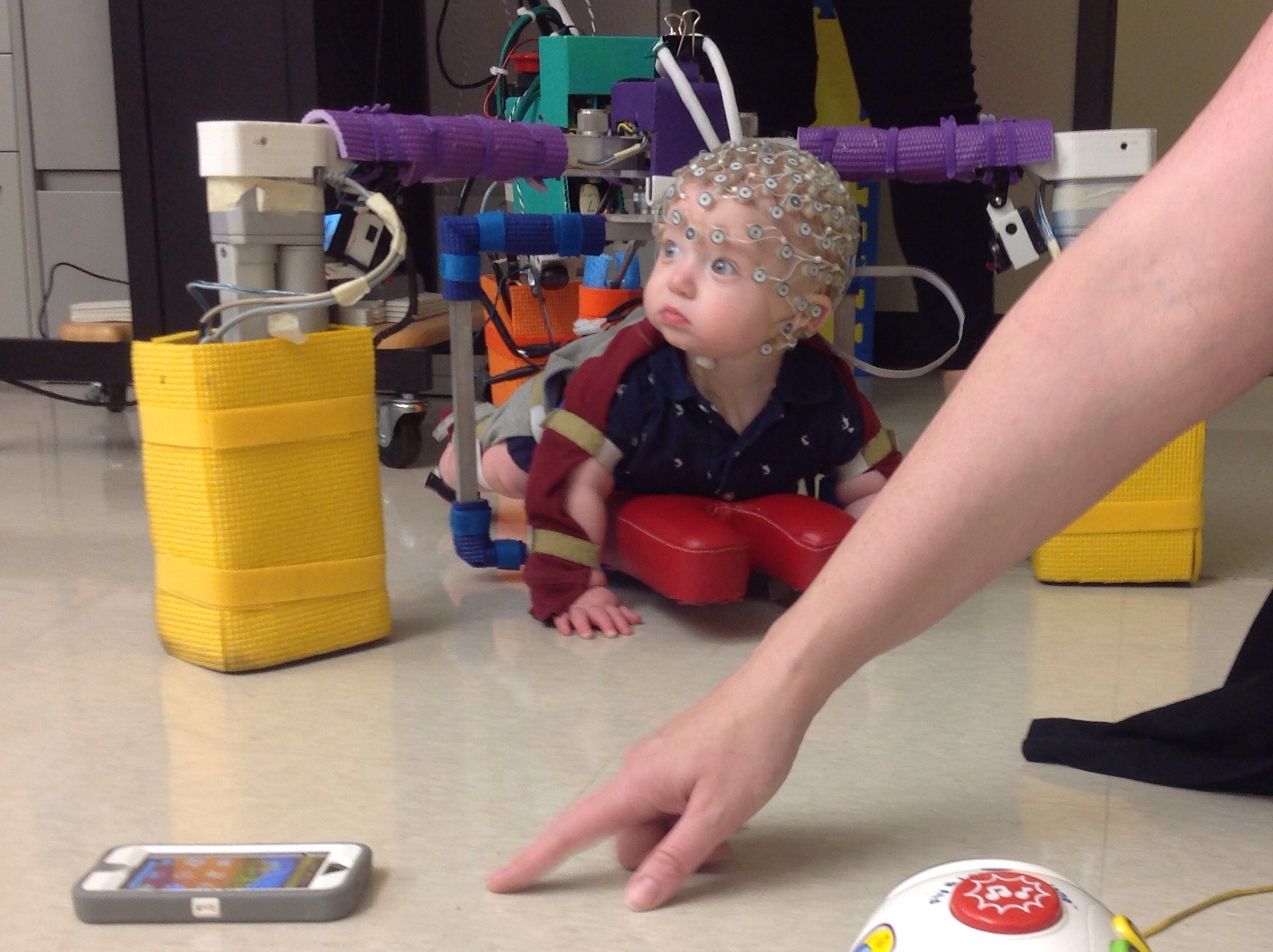
Robotic device designed to help babies with disabilities make physical and developmental gains
A University of Oklahoma researcher dreamed of a device to help babies with disabilities crawl. Now, that dream is a reality and one of only 13 inventions showcased at the Smithsonian in Washington D.C.
It’s an innovation like no other. The Self-Initiated Prone Powered Crawler, the brainchild of researcher Thubi Kolobi, Ph.D. of the OU Health Sciences Center, was given robotic life by a colleague at Virginia Commonwealth University and computer scientists as well as engineers on OU’s Norman campus.
Commonly known by its acronym SIPPC (“sip-see”), the device marries technology with a baby’s innate desire to move and explore his or her environment. It listens to subtle cues from babies with cerebral palsy and other disabilities, allowing them movement that would not be possible otherwise.
“The SIPPC is not just an instrument. It is an interactive device with movement initiated by the baby. It is the baby and the device working together that make the SIPPC system. This makes it not only innovative, but one of a kind,” said Thubi Kolobe, Ph.D., Jill Pitman Jones Professor of Physical Therapy in the OU College of Allied Health’s Department of Rehabilitation Sciences.
OU’s Office of Technology Development, working with VCU, has secured a jointly-held patent on the second iteration of the SIPPC, also called SIPPC 2.
In the meantime, computer scientists and engineers at OU Norman work to advance the next generation of the device — one that is even more responsive to the baby’s movements and that provides important new insights into brain function of babies while utilizing the SIPPC.
“The selection of this device to be a part of this important national event honors the dedication of OU researchers to help improve the lives of children at risk for disabilities and those living with them, “ said David L. Boren, president, the University of Oklahoma. “It also underlines the importance of the patent and intellectual property systems in supporting both invention and innovation, as we work to move new devices and treatments more quickly to those who need them.”
The public will got hands-on exposure to the SIPPC 2 at the Smithsonian’s Innovation Festival, Sept. 26th and 27th, in Washington D.C.
“We are very proud of this research,” said Dr. Jason Sanders, interim senior vice president and provost of the OU Health Sciences Center. “Innovation is a big part of America’s story. This Smithsonian event provides a unique opportunity for the public to discover inventions and to meet those, like Dr. Kolobe, whose dreams and designs have created new innovations that ultimately may change or enhance lives.”









